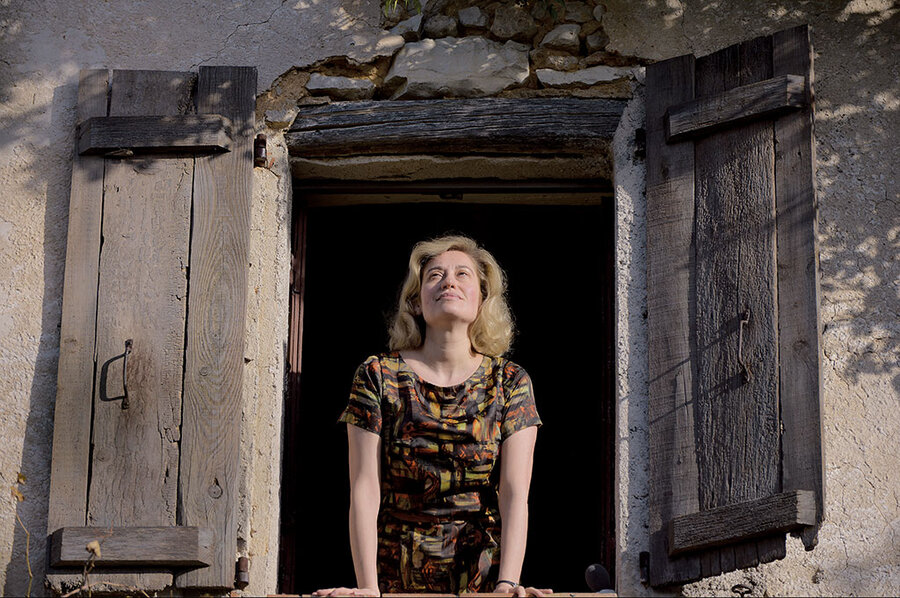'Violette' centers on a French writer's enigmatic art and life
Loading...
Violette Leduc was a pioneering mid-20th-century feminist French writer whose work most often was pulled from her own psychosexual turmoils. For all the upfrontness of her memoirs and thinly veiled romans à clef, she could by all accounts be a forbidding presence, and this is the aspect that writer-director Martin Provost has chosen to affirm in “Violette,” starring Emmanuelle Devos. Not many of Leduc’s written words are in this film, because Provost is equating the life with the work. His philosophy: Show the life, get the writer.
Despite its art-film trappings, this approach is not very far from the standard Hollywood approach to an artist’s life. Since it’s notoriously difficult to make a movie about a writer without resorting to a lot of clichéd “Aha!” moments at the writing desk, Provost’s method has its justifications, especially since Leduc’s life was indeed the source of so much of her work. Still, there is a disconnect here between the woman on-screen, who is almost preternaturally indrawn, and the writer, whose sexual and emotional frankness was startling on the page. We are not made to see how someone could exude such diametrically opposed personas. (Leduc’s only big commercial success during her lifetime was “La Bâtarde,” written in 1964, eight years before her death at age 65.)
Provost is attracted to “outsider” women whose lives are indistinguishable from their art. He is particularly mesmerized by the blank spaces in their psyches. His best film, the masterpiece “Séraphine,” starring Yolande Moreau, was about the real-life Séraphine Louis, a religiously devout housekeeper who lived most of her anguished life in poverty and painted shockingly avant-garde floral abstractions. That film had a mysterious, brute lyricism; the moments of emotional revelation surrounding the near-mute Séraphine were like epiphanies.
Provost tries to accomplish for Leduc what “Séraphine” did for Séraphine Louis; that is, he wants to dispense with all the traditional biopic filler and focus on his heroine’s plangent, embattled soul. Devos’s performance resists that approach, though. She’s an imposing presence, with a blocklike, almost cubist visage, but, for a woman who wrote about passion, her Leduc is almost all agony and no ecstasy. Leduc believed she was unattractive, and so we get from her such typical pronouncements as, “I’m a neurotic, crazy, used-up old bag.” I don’t think Devos cracks a single smile in the movie, which is rather overdoing it. Her character arc is more like a flat line.
Provost focuses on Leduc’s inexorable attraction to calamity and dissolution, but, at the same time, he presents her as a big blank enigma. (He also lards the soundtrack with music by Arvo Pärt for that creepy, doomy effect.) Although Leduc was part of a heady, exhilarating Parisian arts scene, Provost avoids showing us any of the major players except for Jean Genet (a very fine Jacques Bonnaffé) and, most prominently, Simone de Beauvoir (Sandrine Kiberlain), Leduc’s mentor and benefactor and the icon for whom the bisexual Leduc carried an unrequited torch. De Beauvoir, as played by Kiberlain, is even more of a stiff than Leduc. (Typical pensée: “Marriage is an imposture.”) She is also fond of telegraphing future glory, as when, referring to Leduc’s barrier-breaking, she tells her – and us – that “one day they’ll thank you.”
Did Provost think that, if de Beauvoir lightened up a bit, Leduc’s furious dourness would seem absurd by comparison? And did he omit even walk-ons by the likes of Cocteau, Camus, and Sartre because he was afraid his movie might turn into a highbrow “Midnight in Paris”?
De Beauvoir believed that artists, however bereft, could achieve salvation through literature. Provost doesn’t quite endorse this high-toned sentimentality; Leduc is only marginally happier by the film’s end, and only because she has moved into the countryside and essentially removed herself from the fray. Provost is in love with the battlegrounds of creation, not its emancipations. He’s an extraordinary artist, but his fixation on the spooky enigma of genius has become programmatic. “Séraphine” was haunting; “Violette,” for all its writhings, is familiar. Grade: B (Unrated.)







